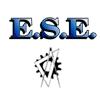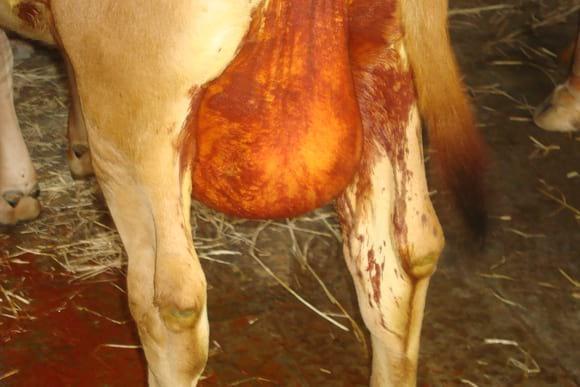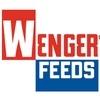Explore all the information on
Feed additives
Welcome to the page about Feed additives of Engormix; a source of knowledge on Feed additives.
The inclusion of plant extracts in livestock feed supplements has been widely researched as a strategy to replace synthetic feed additives and improve animal health and production traits. Among several plant metabolites, tannins have attracted significant attention in regards to dairy cows. Tannins are water soluble plant polyphenol metabolites known for a binding affinity for proteins, amino acids, metal ions and polysaccharides (Makkar, 2003; Mueller-Harvey, 2006). They have the ability to...
Comments : 0
Recommendations: 0
INTRODUCTION The calls for the promotion of variable alternatives to modern health management practices need to be intensified as the rate of shortfalls in the supply of animal protein to the teeming world population continues to widen especially among resource-poor citizens of developing countries. The high cost and non-availability of chemically synthesized allopathic drugs among the local people that constitute the majority of the livestock farmers promote these shortfalls as...
Comments : 0
Recommendations: 0
INTRODUCTION Campylobacter spp. is well recognized as the leading cause of bacterial foodborne diarrheal disease and poses a serious economical and health risk globally (Skanseng et al., 2010; Silva et al., 2011; Meunier et al., 2015). The most common route of campylobacteriosis infection in humans is the handling or consumption of contaminated poultry meat (Lee and Newell, 2006). Campylobacter spp. is a commensal organism found in cattle, sheep, swine, wildlife, and domestic...
Comments : 0
Recommendations: 0
Introduction The purpose of this booklet is to provide both a semi-technical and non-technical understanding of the various yeast products offered to, and used by, the feed industry. It does not deal with animal research and product efficacy, but merely describes what the products are and the benefits they are purported to provide. Efficacy in the animal is too complex a subject to deal with in this short booklet. The hope is that the...
Comments : 7
Recommendations: 3
1 Introduction Due to wastewater production and the manufacture of polymeric materials through different industrial processes, industrial development has posed numerous environmental challenges [1]. Water and land contamination may result from wanton dumping of this waste (with or without adequate treatment) and the polymer. Notwithstanding the heinous negative effects on soil and water [2] this impacts negatively on the wellbeing of living creatures [3]. This has been a major...
Comments : 0
Recommendations: 2
INTRODUCTION Finishing diets are composed of about 45% to 55% starch based on typical dietary corn inclusion (Samuelson et al., 2016). While the rumen is the primary site of starch digestion, it is highly dependent on grain source, processing method, and degree of grain processing (Owens et al., 1997). Steam flaking corn usually improves cattle performance due to an increase of starch digestibility compared with simpler processing methods like dry-rolling (Zinn...
Comments : 0
Recommendations: 0
I. INTRODUCTION Kappaphycus alvarezii (KPA) is a red alga that is also called Eucheuma cottonii . Seaweeds have received significant attention for their potential as sources of natural antioxidants attributed to the carotenoids, tocopherols and polyphenols present which contribute to inhibition or suppression of free radical generation (Athukorala et al. 2006). Kappaphycus alvarezii is rich in enzymes, nutrients, minerals, calcium, iron, fibres...
Comments : 0
Recommendations: 0
INTRODUCTION The Food and Agriculture Organization (FAO) forecasts that the human population will increase by 30% by 2050 (FAO, 2019) with corresponding increase in demand for food. Animal protein, the largest component of human food is entirely dependent on livestock production channels as its source. Over 70% of the cost of livestock production is feed, and the second largest component and cost of feed is the crude protein, a segment that has been challenged for its...
Comments : 0
Recommendations: 0
As renewable diesel emerges as the ideal biofuel, soybean oil demand is expected to erupt, and U.S. Soy is poised to meet demand.
The announcement of unlikely partnerships, such as Loves and Cargill, Marathon Petroleum and ADM and Chevon and Bunge, have appeared on front pages of newspapers across the United States.
“It’s clear that sustainability is a bigger and bigger business driver around the world,” says Jim Sutter, CEO of the U.S. Soybean Export...
Comments : 2
Recommendations: 0
INTRODUCTION The importance of nutritional management for improving production and minimizing environmental impacts from beef and dairy cattle industry is well-established (McAllister et al., 1996; Havlík et al., 2014; Bach et al., 2020). Corn grain is the most commonly used cereal grain for dairy and beef production in the United States and its high starch content yields energy to support greater levels of milk and meat production (Giuberti et al., 2014)....
Comments : 0
Recommendations: 2
Can anyone provide in-put on characteristic differentiation between "Bentonite and Hydrated Sodium Calcium Alumino Silicate (HSCAS)" Both product's pro's n con's in use for Poultry & Cattle Feed as Toxin Binder ...
Comments : 7
Recommendations: 1
The Nature Conservancy, the Innovation Center for U.S. Dairy, and the Institute for Feed Education and Research are launching a three-year project to explore innovative feed management strategies that can reduce enteric methane emissions in dairy cattle. The U.S. Department of Agriculture (USDA) recently announced a $537,440 award for this project through its Conservation Innovation Grants On-Farm Conservation Innovation Trial program. With project partner resource contributions, the project...
Comments : 0
Recommendations: 0
Feed represents the primary cost of broiler production, thus the formulation of cost-effective diets that meet broiler nutritional requirements is critical. To ensure this objective is met, nutrient specifications of feed ingredients must be accurately determined. However, Australian broiler nutritionists have expressed concern, as many nutrient specification databases contain dated information or lack Australian specific data. Therefore, the aim of this project was to compile current...
Comments : 0
Recommendations: 0
INTRODUCTION The feed conversion ratio (FCR) is, in addition to the cost of the feed, the most influential variable in the cost structure of poultry production 1,2 and consequently, drives the economic efficiency of poultry operations. As a result, the FCR represents an important response variable in nutrition experiments, irrespective of whether or not they are complex, as metabolism studies 3,4 , or as simple as the experiments that are usually conducted to...
Comments : 0
Recommendations: 0
It could be argued that animal nutrition as a global industry really kicked off when the idea of selling supplements to better balance out the nutritional values of feedstuffs began. Clearly, it was a landmark...
Comments : 1
Recommendations: 3
Complexes or chelates? Generically speaking, the term ‘complex’ can be used to describe the product formed when a metal ion reacts with a bonding group or ligand that contains an atom which has a lone pair of electrons. In the complex, the ligand is bonded to the metal ion through donor atoms such as oxygen, nitrogen or sulphur. Ligands that contain only one donor atom are termed ‘monodentate’, whilst those that contain two or...
Comments : 0
Recommendations: 0
Adisseo several studies have shown that the addition of a liquid source of methionine (OH-Methionine) may lead to power savings of up to 13% compared to the powder form (DL-Methionine) when pelleting. This conclusion on the beneficial impact of liquid methionine was obtained in two trials conducted in TECALIMAN, the French technical center for Feed, in their pilot pellet mill (2016 and 2020). Theses tests assess the pelleting behavior of complete feed by varying formula and...
Comments : 0
Recommendations: 2
Background Spray-dried plasma (SDP) is one of additives in swine diets [1–3] and contains high protein with balanced contents of amino acids and various physiological components, such as immunoglobulins, peptides, glycoproteins, and others [4], that contribute to modulation of microbial populations [5, 6], immune responses and inflammation [4, 7, 8], and intestinal morphology [8, 9], and others [4]. Based on these beneficial effects, SDP is typically used in nursery...
Comments : 0
Recommendations: 0
ABSTRACT Poultry diets are formulated primarily using cereals and protein meals (corn, wheat and soybean meal) as the main ingredients. There is noted shift in using coproducts from cereals and oilseeds in poultry diets due to availability and relatively lower cost. However, there is wide variation in the nutritional values of both conventional feedstuffs and coproducts, which creates a necessity of developing routine...
Comments : 0
Recommendations: 1


.jpg&w=3840&q=75)



.jpg&w=3840&q=75)
















